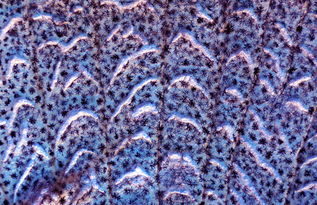
Introduction:
The reservoir, with its vast waters and abundant fish, is a paradise for anglers seeking a challenge and a rewarding catch. Among the diverse species found in these waters, the river perch stands out as a popular target for its fighting spirit and delicious taste. Whether you are a seasoned angler or a beginner looking to expand your fishing horizons, mastering the art of catching river perch in reservoirs requires a blend of knowledge, skill, and patience. In this article, we will delve into the essential fishing techniques that can help you become a proficient river perch angler.
Understanding the Habitat:
Before you cast your line, it's crucial to understand the habitat of the river perch. These fish are often found in deeper waters, particularly around submerged structures such as logs, rocks, and artificial reefs. They are also known to congregate in areas with strong currents and around the edges of weed beds. By familiarizing yourself with the reservoir's topography and the perch's preferred habitats, you can increase your chances of a successful catch.
Choosing the Right Equipment:
The right equipment can make all the difference when it comes to catching river perch. Here are some essential items to consider:
Rod and Reel: A medium-heavy action rod with a fast taper is ideal for river perch. A spinning reel with a good drag system is recommended, as it allows for smooth retrieves and provides ample control during the fight.
Line: Use a monofilament line with a breaking strength of 6 to 12 pounds. This provides enough strength to handle the perch's spirited fight without being too heavy to spook the fish.
Lures and Baits: River perch are opportunistic feeders and can be caught on a variety of lures and baits. Live bait such as worms, leeches, and minnows are highly effective, while artificial lures like jigs, spinners, and crankbaits can also produce results.
Techniques for Success:
Locating the Fish: Start by scanning the reservoir for signs of activity, such as fish jumping or splashing. Once you've identified potential hotspots, approach them with caution to avoid spooking the fish.
Presenting the Bait: When using live bait, such as worms or minnows, hook the bait through the tail or just behind the head to keep it natural and wriggling. For artificial lures, vary your retrieve speed and technique to mimic the natural movement of prey.
Timing Your Bites: River perch are often found in schools, so once you start catching fish, it's important to keep the action going. Pay attention to the timing of your bites and adjust your presentation accordingly.
Handling the Fish: Once you've hooked a river perch, handle the fish with care to ensure its survival. Use a dehooking tool to gently remove the hook, and if possible, release the fish back into the water to enjoy another day of fishing.
Advanced Techniques:
Trolling: Trolling can be an effective method for covering a large area and finding river perch. Use a variety of lures and adjust your speed to find the sweet spot where the perch are actively feeding.
Jigging: Jigging involves casting a lure to the bottom and then quickly retrieving it in short, sharp movements. This technique can be particularly effective in deeper waters or around submerged structures.
Night Fishing: River perch can be caught at night, particularly during the spring and summer months. Use soft plastics or live bait and fish shallow areas where the perch are likely to congregate.
Conclusion:
Catching river perch in reservoirs can be a challenging yet highly rewarding experience. By understanding the habitat, choosing the right equipment, and employing effective fishing techniques, you can increase your chances of success. Remember to always fish responsibly and respect the environment, ensuring that the river perch population remains healthy for future generations of anglers. With patience, practice, and a bit of luck, you'll be well on your way to becoming a master of river perch fishing in reservoirs.












